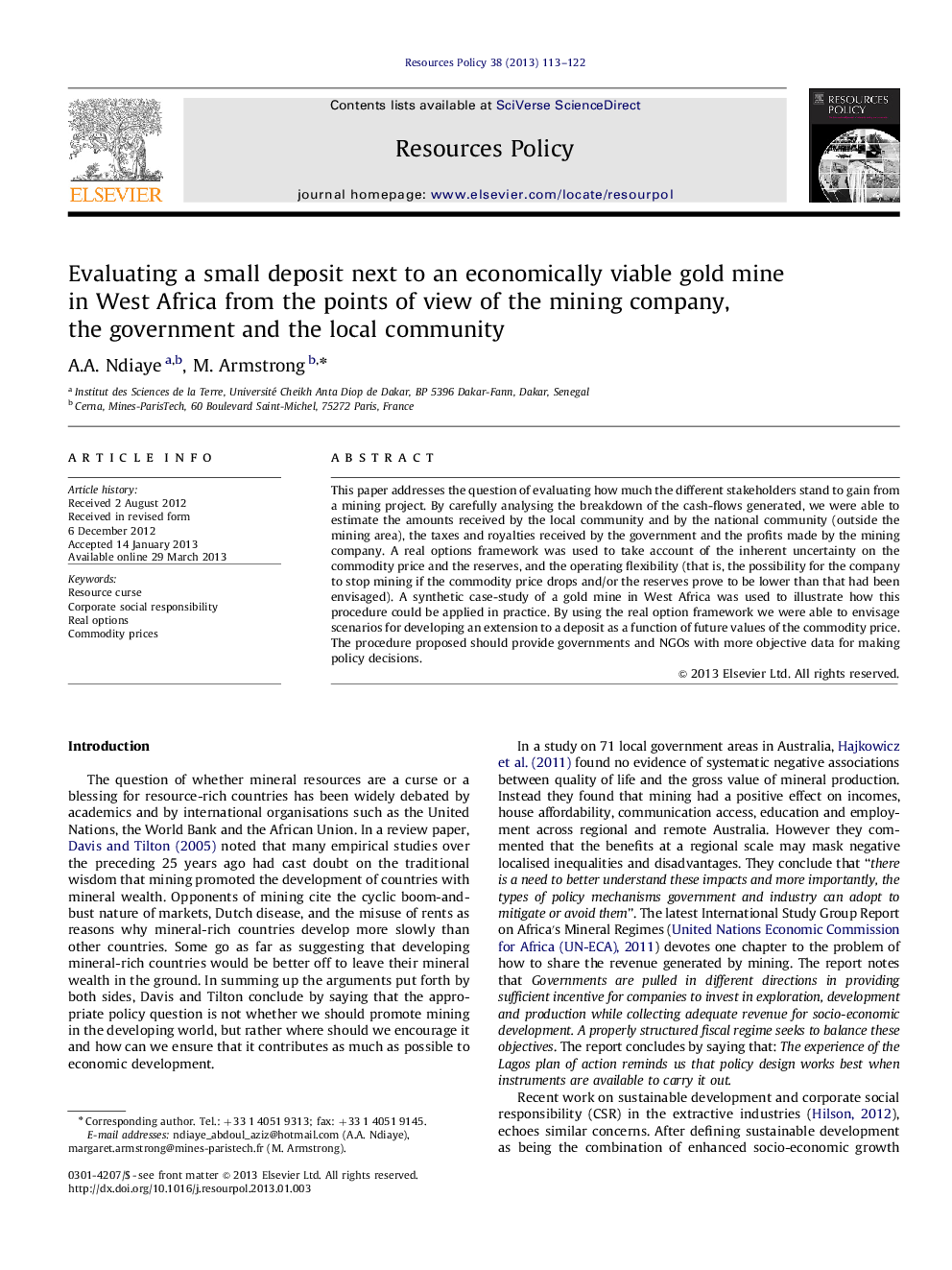| Article ID | Journal | Published Year | Pages | File Type |
|---|---|---|---|---|
| 985697 | Resources Policy | 2013 | 10 Pages |
This paper addresses the question of evaluating how much the different stakeholders stand to gain from a mining project. By carefully analysing the breakdown of the cash-flows generated, we were able to estimate the amounts received by the local community and by the national community (outside the mining area), the taxes and royalties received by the government and the profits made by the mining company. A real options framework was used to take account of the inherent uncertainty on the commodity price and the reserves, and the operating flexibility (that is, the possibility for the company to stop mining if the commodity price drops and/or the reserves prove to be lower than that had been envisaged). A synthetic case-study of a gold mine in West Africa was used to illustrate how this procedure could be applied in practice. By using the real option framework we were able to envisage scenarios for developing an extension to a deposit as a function of future values of the commodity price. The procedure proposed should provide governments and NGOs with more objective data for making policy decisions.
► We evaluate how much each stakeholder will get from a mining project. ► A case-study on a marginal gold deposit in West Africa illustrates this procedure. ► We take account of uncertainty on the commodity price and the reserves. ► Decisions are made sequentially as the reserves and the price become known. ► Procedure provides governments & NGOs with objective data for policy decisions.
